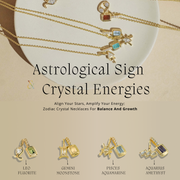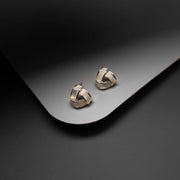What Is Sapphire? The Science of a Cosmic Gem
Sapphire is a crystalline form of aluminium oxide (Al₂O₃), belonging to the corundum mineral family. With a remarkable Mohs hardness of 9, it’s the second-hardest natural gem after diamond, making it ideal for heirloom jewelry. What defines sapphire versus ruby? All non-red corundum is sapphire—red corundum alone earns the "ruby" title.
Key Properties:
-
Colors: Blue (most iconic), pink, yellow, green, purple, orange, and even colorless.
-
Optical Magic: Exhibits pleochroism (shifting colors when tilted) and asterism (star effect).
-
Formation: Created under extreme heat and pressure in igneous/metamorphic rocks, often taking millions of years.

What Color Is Sapphire? A Spectrum of Nature’s Artistry
While blue dominates popular imagination, sapphire’s palette is astonishingly diverse. Trace elements dictate its hues:
-
Blue: Iron + titanium (most prized: velvety "Kashmir blue" or "cornflower blue").
-
Yellow/Orange: Iron alone.
-
Pink/Purple: Chromium + iron.
-
Green: Iron + titanium mix.
Rare & Coveted Varieties:
-
Padparadscha: A lotus-colored blend of pink and orange—the rarest sapphire, named after the Sinhalese for "aquatic lotus blossom." Untreated specimens fetch astronomical prices.
-
Color-Change Sapphires: Shift from blue in daylight to purple under incandescent light due to vanadium impurities.
-
Parti Sapphires: Display multiple distinct colors (e.g., blue + yellow) in a single stone—exclusively natural and untreated.

Star Sapphires: When Inclusions Create Magic
Asterism, the star-like phenomenon, occurs when rutile needles (TiO₂) align within the stone. Cut en cabochon, these gems reveal 6-rayed (or rare 12-rayed) stars:
-
Most Valuable: Deep blue or red (star ruby) with sharp, centered stars.
-
Legendary Examples: The 563-carat Star of India (New York) and 733-carat Black Star of Queensland.
"Inclusions—often flaws in other gems—become poetry in star sapphires."
The Four Pillars of Sapphire Value
1. Color (Most Critical)
-
Blue Sapphires: Premium for vivid, medium-dark tones with violet undertones. Grayish or overly light/dark stones are less valuable.
-
Fancy Colors: Intensity rules—e.g., pure orange > brownish yellow.
| Color Type | Key Markets | Price Drivers |
|---|---|---|
| Kashmir Blue | Collector auctions | Velvety saturation + rarity |
| Padparadscha | High-end Asia | Untreated, >2ct salmon hues |
| Pink | Engagement rings | Vivid saturation (no gray) |
2. Clarity
-
Trade Expectation: Eye-clean stones command premiums, but some inclusions add value (e.g., Kashmir’s "silk" creates softness).
-
Red Flags: Fractures or inclusions that threaten durability slash value.
3. Cut
-
Goals: Maximize color saturation (e.g., orienting crystals to show violet-blue pleochroism) and minimize "windowing" (light leakage).
-
Star Sapphires: Must be cut as cabochons with domes precisely angled to center the star5.
4. Carat Weight
-
Reality Check: Fine-quality >5ct sapphires are exceptionally rare. A 10ct vivid blue can cost 10x more per carat than a 1ct equivalent.

Sapphire Treatments: Know What You Buy
-
Heat Treatment: Industry-standard for enhancing color/clarity. Disclosure is mandatory in certified gems.
-
Diffusion/Lattice Treatment: Adds elements (e.g., beryllium) to alter color—permanent but reduces value vs. natural stones.
-
Glass Filling: Masks fractures in low-quality stones—avoid (durability risk).
Always Demand Certification: Labs like GIA or AGL verify origin and treatments.
Ethical Sourcing & Notable Origins
-
Kashmir (India): Mythical velvety blues; mines depleted since 1880s.
-
Sri Lanka: Renowned for pastel blues and padparadscha.
-
Montana (USA): "Yogo sapphires" with metallic blue—rarely need heat treatment.
-
Ethical Shift: Brands now use blockchain tracing for conflict-free stones.
Caring for Your Sapphire Jewelry
-
Cleaning: Ultrasonic-safe (unlike emeralds), but skip steam cleaners for fracture-filled stones.
-
Storage: Separate from diamonds to prevent scratches.
-
Recharging: Sunlight won’t fade true sapphires—unlike amethyst or topaz.
Why Sapphire Endures: Science Meets Soul
Beyond its beauty, sapphire powers technology:
-
Industrial Uses: Watch crystals, LED substrates, and spacecraft windows exploit its hardness and thermal stability.
-
Metaphysical Legacy: Associated with wisdom (ancient Greeks) and divine favor (medieval kings).
"In sapphire, we find the paradox of creation: born in Earth’s violent depths, yet radiating ethereal calm."
FAQs About Sapphire Colors
Q: Can sapphires be red?
A: No—red corundum is classified as ruby. The threshold is subjective: US labs call light red stones "pink sapphires".
Q: Are padparadscha sapphires heated?
A: Most modern padparadschas are beryllium-diffused. Natural, untreated stones are exceptionally rare—ask for lab reports.
Q: Why do some sapphires look black?
A: In star sapphires, dense rutile inclusions mask body color. True black sapphires (no asterism) are opaque and less valuable.







